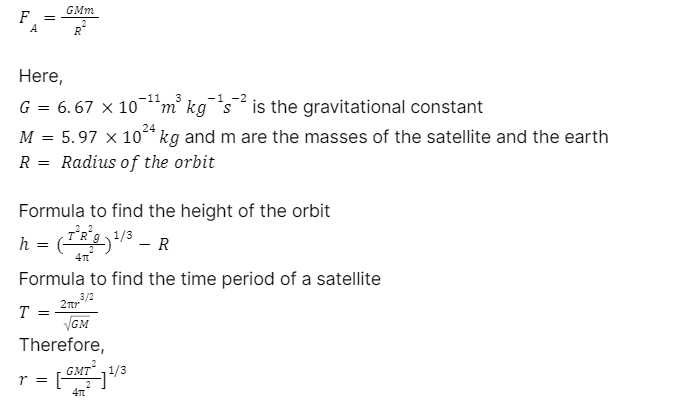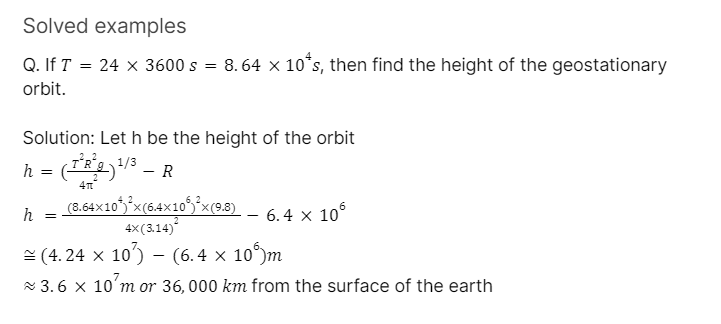The Geostationary Orbit is also called geosynchronous equatorial orbit and geostationary earth orbit. Earth’s natural satellite is the Moon, and apart from this, several artificial satellites are orbiting the earth. The Soviet Union launched the first artificial satellite on October 4, 1957. Artificial satellites are classified into several types: communication satellites, navigation satellites, remote satellites, drone satellites, polar satellites, geocentric satellites, geostationary satellites, ground satellites, and nanosatellites. Since the satellites orbit the earth at the same speed as the rotation of Earth, they seem stationary if seen from the earth.
History of Geostationary Orbits
In 1929, Herman Potocnik gave us a rough idea of how the geostationary earth orbits and geosynchronous orbits can be used by space stations. The Geostationary Orbit was first explained by Arthur C. Clarke, a famous science fiction writer in the 1940s. Clark described that these orbits could be used for relay communication and broadcast satellites known as Clarke orbit, and the satellites present in this orbit are called Clarke Belt.
While Harold Rosen was working at the Hughes Aircraft, he also designed the first-ever geostationary satellite in 1959 after being inspired by the Sputnik 1. He was looking forward to using the geostationary satellite for globalised communications, but the major challenge was placing a satellite in the geostationary orbit. It would require a tremendous amount of rocket power and is very expensive.
In 1961 Harold Rosen and his team made a cylindrical prototype with a diameter of 76 cm, weighing 11.3 KG, and a height of 38 centimetres. The prototype was spin-stabilised, small and light, making it easy to place it in orbit. After completing the prototype Harold Rosen and his team were given the contract to make the satellite. They built the satellite named Syncom 1, which was not successful because of the electronics failure and then built the Syncom 2 in 1963, which was successfully launched and placed in the geosynchronous orbit.
The Syncom 2 was successful in relaying TV transmissions. On August 23, 1963, US President John F. Kennedy was able to communicate from a ship with the Nigerian Prime Minister Abubakar Tafawa Balewa through the phone. After this, another satellite, Syncom 3, was built in 1964, the first satellite to be placed in geostationary orbit, launched with the help of a Delta D rocket. This significantly helped and enhanced the live coverage of several events, such as the summer Olympics being transmitted live from Japan to Africa. Since 1964 these geostationary satellites have been commonly used for several purposes, such as satellite television.
Geostationary Orbit formula
The gravitational force FA between the satellite and the earth is in the inner portion of the radial direction, and the equation gives the magnitude.


Geosynchronous VS Geostationary Orbit
The difference between Geosynchronous VS Geostationary Orbit is
Geosynchronous Orbit | Geostationary Orbit |
A geosynchronous orbit is a high Earth orbit that allows satellites to match Earth’s rotation. | Geostationary Orbit lies 35768 km above the earth’s equator and follows the direction of the earth’s rotation. |
There are several geosynchronous orbits around the earth. | There is only one geostationary orbit around the earth. |
The geostationary orbit can be both non-circular and circular. | The geostationary orbit is circular. |
The inclination of a geosynchronous satellite is with respect to the earth’s equator. | The geostationary satellite does not incline. |
Conclusion
Geostationary orbit is where the satellites will seem stationary from the earth’s surface. For an orbit to be geostationary, the orbit must be a geosynchronous orbit with a rotational period similar to that of earth. For a satellite to be stationary when seen from the earth’s surface, it should have zero inclination and eccentricity.
There is only one geostationary orbit, which is one of the most significant disadvantages as there are limitations and fewer slots to place geostationary satellites. This article discussed the history of geostationary orbits, the geostationary orbit formula, and the difference between geosynchronous and geostationary orbits.
 Profile
Profile Settings
Settings Refer your friends
Refer your friends Sign out
Sign out




